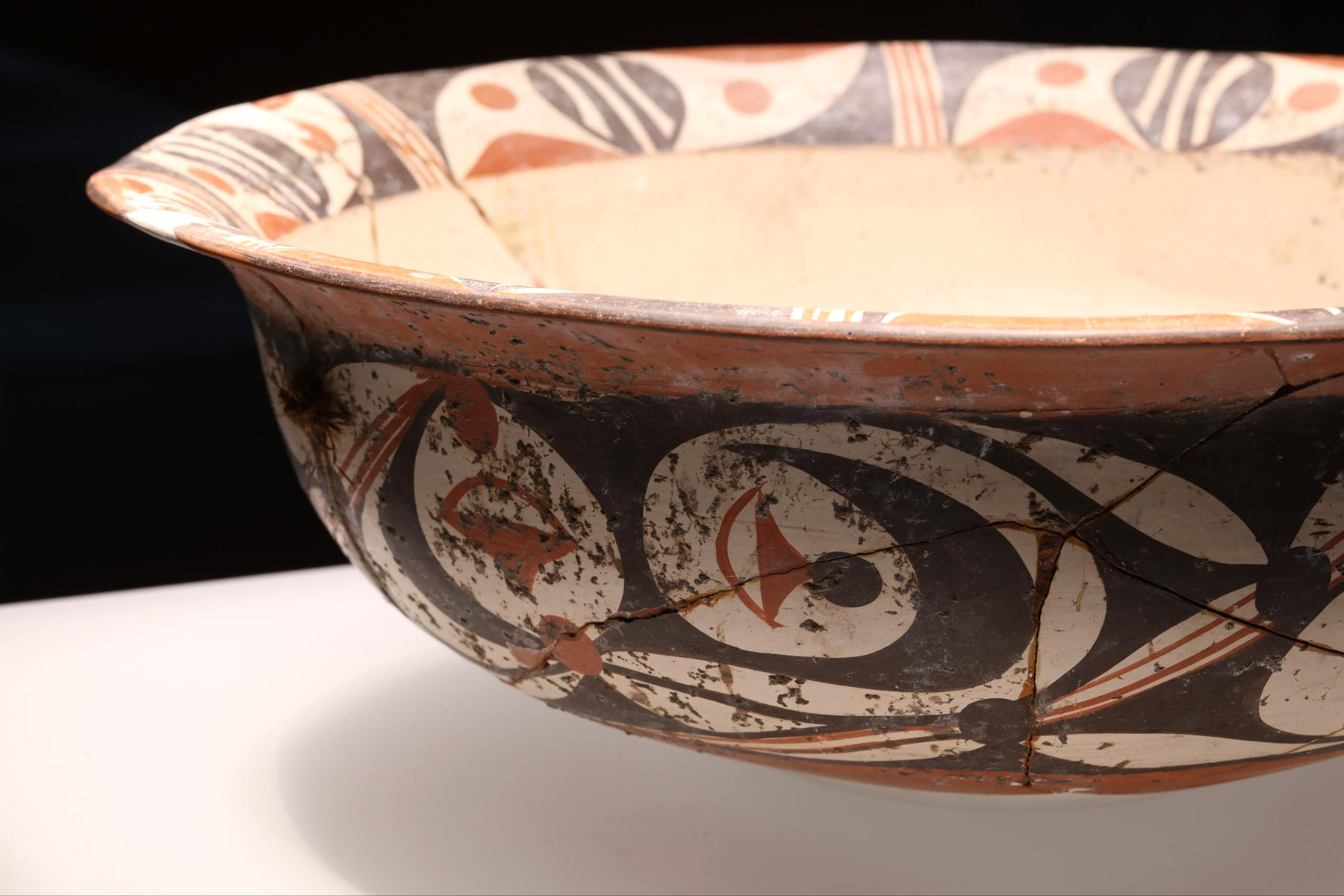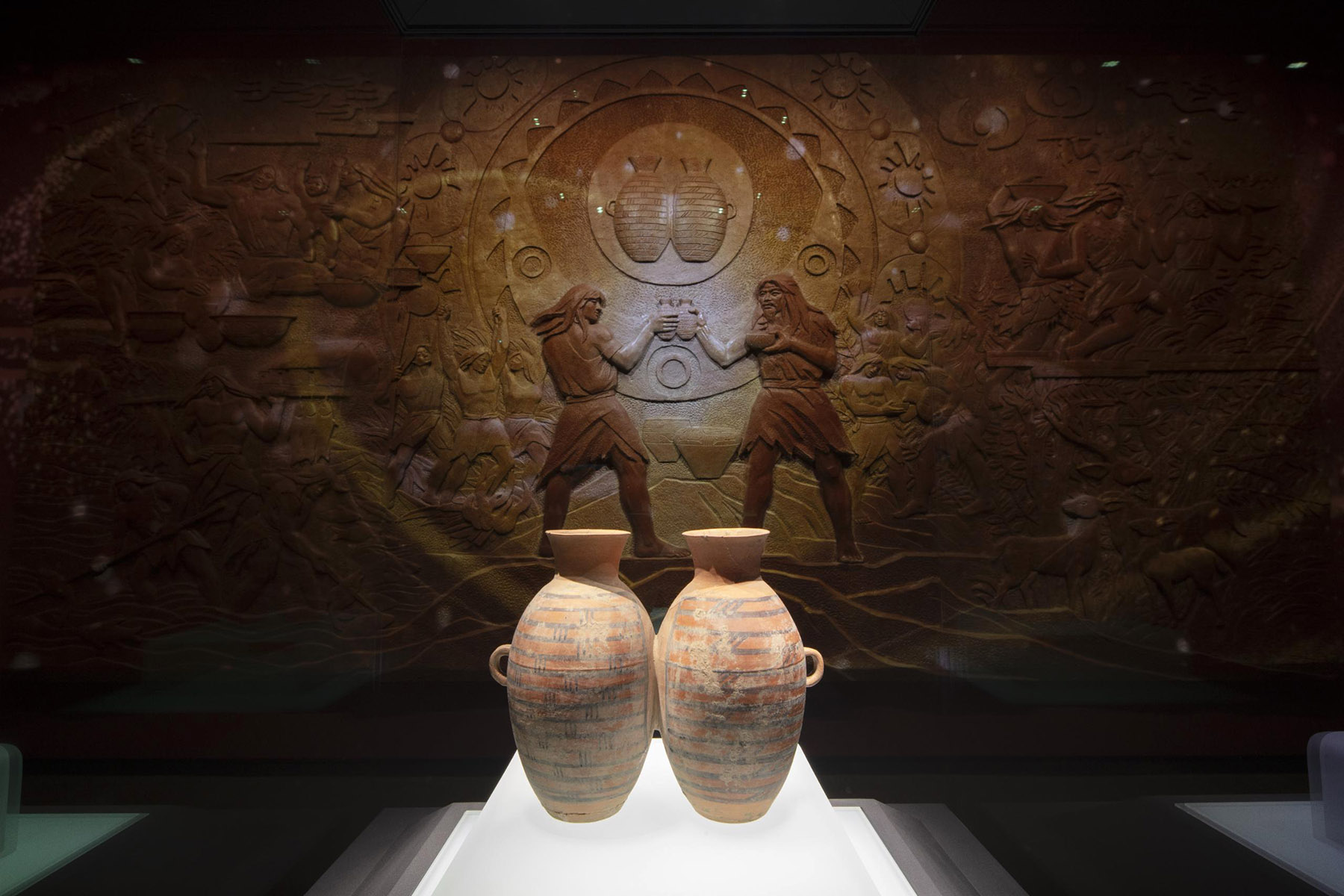
Visitors to the brand-new museum of the Dahecun ruins will experience a real-life journey through the evolution of Chinese civilization dating to as early as 7,000 to 5,000 years ago.
Located in Zhengzhou, Henan province, the Dahecun Site Museum showcases more than 1,000 artifacts, unrolling a panorama of civilization from the early Yangshao period to the Shang Dynasty (c.16th century-11th century BC), with the help of new technology.
Over 70 percent of artifacts made their public debut at the museum opened for trial operation on China's annual Cultural and Natural Heritage Day on June 14.
Discovered in 1964, the 530,000-square-meter Dahecun site is a large ancient settlement encompassing four archaeological cultures: Yangshao (dating back 7,000 to 4,600 years), Longshan (dating back 4,500 to 4,000 years), Xia Dynasty (c.21st century-16th century BC) and Shang.
According to Hu Jizhong, the museum's director, the site fully documents the origin, formation and development of Yangshao culture, earning it the title "yardstick of Yangshao culture".
READ MORE: As old as the weather
Studies of Yangshao culture, famed for its painted pottery, also witnessed the birth of modern Chinese archaeology in the 1920s.
"The new museum features a 7,292-square-meter exhibition space showcasing over 1,600 exquisite artifacts from more than 30 sites, 70 percent of which are displayed publicly for the first time," Hu says.
From an aerial view, the 19,700-square-meter structure adopts a design strategy of "sinking into the earth, integrating landscapes, and harmonizing with the environment", according to the museum introduction.
Upon entering, visitors walk alongside rammed-earth walls that visually simulate the layered sedimentation of the Yellow River, gradually descending from ground level to underground — creating a sense of "folded time and space", Hu adds.
A striking exhibit is a painted pottery twin pot unearthed in 1972. It used to be on display at the Henan Museum, in Zhengzhou, for over 50 years.
"The pot is the 'cultural ambassador' of the Dahecun," Hu says. "Its return completes the historical narrative of the site."

Crafted from red pottery and adorned with parallel-line patterns, the pot's unique side-by-side design not only reflects the ceremonial culture of tribal alliances 6,000 years ago but also stands as a masterpiece of prehistoric artistry. Its minimalist style and exquisite craftsmanship continue to amaze viewers today.
"The distinctive twin-pot design makes this artifact an 'emblem of friendship'," says Shi Mengru, a staff member at the museum.
Experts believe it was a sacred ceremonial vessel used by tribal leaders or elders during alliances or significant rituals — a symbol of peace, goodwill and kinship.
The museum is filled with other never-before-seen artifacts, offering visitors a fresh glimpse into ancient history. One of the most significant discoveries on display is a late Yangshao culture city wall, constructed using a sophisticated mix of adobe masonry and rammed-earth techniques. This rare find provides crucial insights into China's early urban development and ancient defensive systems.
Another striking centerpiece is the Civilization Code Wall, featuring over 50 painted pottery fragments unveiled to the public for the first time. They feature fiery sun patterns reflecting ancient worship and delicate butterfly-whisker motifs revealing a deep connection to nature. Every brushstroke on these ancient shards preserves early civilizations' poetic imagination and spiritual world.
The museum employs digital technologies, such as 3D interaction and CG lighting effects, to create a diverse, immersive experience.
"From macro to micro, our exhibition starts with the world's great rivers, narrows to the Yellow River, and then focuses on the Dahecun site," says Cai Zheng, from Shanghai, one of the museum's designers.
ALSO READ: Routines of antiquity in focus
"To make complex archaeological findings accessible, we've used extensive digital storytelling to offer an intuitive, engaging journey into the lives of Dahecun's ancient inhabitants."
In the immersive zone, visitors can wander through re-created jungle settlements, witnessing ancient fishing, pottery-making and grain harvesting scenes. The crackle of kiln fires and the aroma of fermenting grains fill the air, making prehistoric life tangible.
"The interactive design here is awe-inspiring," says visitor Wang Xiaoyu. "The Impressions of Yangshao section gave me a systematic understanding of the culture, with strong thematic focus and interactivity."
Hu, the museum director, says, "We aim to bridge the past and present through exhibitions, digital experiences and immersive learning, making Yangshao culture more tangible and engaging for the public."
Contact the writer at zhaoruinan@chinadaily.com.cn


